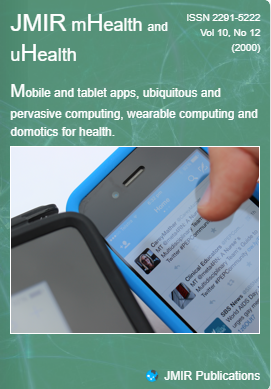Accuracy of Samsung Gear S Smartwatch for Activity Recognition: Validation Study
Background: Wearable accelerometers have greatly improved measurement of physical activity, and the increasing popularity of smartwatches with inherent acceleration data collection suggest their potential use in the physical activity research domain; however, their use needs to be validated.
Objective: This study aimed to assess the validity of accelerometer data collected from a Samsung Gear S smartwatch (SGS) compared with an ActiGraph GT3X+ (GT3X+) activity monitor. The study aims were to (1) assess SGS validity using a mechanical shaker; (2) assess SGS validity using a treadmill running test; and (3) compare individual activity recognition, location of major body movement detection, activity intensity detection, locomotion recognition, and metabolic equivalent scores (METs) estimation between the SGS and GT3X+.
Methods: To validate and compare the SGS accelerometer data with GT3X+ data, we collected data simultaneously from both devices during highly controlled, mechanically simulated, and less-controlled natural wear conditions. First, SGS and GT3X+ data were simultaneously collected from a mechanical shaker and an individual ambulating on a treadmill. Pearson correlation was calculated for mechanical shaker and treadmill experiments. Finally, SGS and GT3X+ data were simultaneously collected during 15 common daily activities performed by 40 participants (n=12 males, mean age 55.15 [SD 17.8] years). A total of 15 frequency- and time-domain features were extracted from SGS and GT3X+ data. We used these features for training machine learning models on 6 tasks: (1) individual activity recognition, (2) activity intensity detection, (3) locomotion recognition, (4) sedentary activity detection, (5) major body movement location detection, and (6) METs estimation. The classification models included random forest, support vector machines, neural networks, and decision trees. The results were compared between devices. We evaluated the effect of different feature extraction window lengths on model accuracy as defined by the percentage of correct classifications. In addition to these classification tasks, we also used the extracted features for METs estimation.
Results: The results were compared between devices. Accelerometer data from SGS were highly correlated with the accelerometer data from GT3X+ for all 3 axes, with a correlation ≥.89 for both the shaker test and treadmill test and ≥.70 for all daily activities, except for computer work. Our results for the classification of activity intensity levels, locomotion, sedentary, major body movement location, and individual activity recognition showed overall accuracies of 0.87, 1.00, 0.98, 0.85, and 0.64, respectively. The results were not significantly different between the SGS and GT3X+. Random forest model was the best model for METs estimation (root mean squared error of .71 and r-squared value of .50).
Conclusions: Our results suggest that a commercial brand smartwatch can be used in lieu of validated research grade activity monitors for individual activity recognition, major body movement location detection, activity intensity detection, and locomotion detection tasks.

